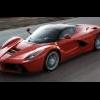Search the Community
Showing results for tags 'Efficiency'.
-
Open concept vs. cubicles – What’s right for your office? https://www.b2bnn.com/2015/01/open-concept-vs-cubicles-whats-right-office/ In Generation X, Douglas Coupland’s character called them “veal fattening pens”. Dilbert gave us the term “Cube farm”. The poor cubicle has been given rough treatment in popular culture while the exposed brick and open-concept office style television series situate in re-purposed factory lofts has fed into the hipster mystique of boutique advertising and “almost” artists studios. In designing the ideal workspace, there are three key assumptions every company needs to address before deciding to go cubical or open concept or, more radically, with a mix of the two. Is maximizing the use of space to save on real estate costs the biggest priority? The maxim of “location, location, location” in our technologically interconnected world brings to mind only the funniest caricatures of inauthentic real estate agents. And yet, cities are economic performers and hot locations where everyone wants to be close to everyone else come at a premium. London, Toronto, New York and California’s Silicon Valley all stand as examples of the expense of convenient urbanity. Cisco, which has offices in some of the world’s highest rent business districts, originally designed its offices with the assumption that employees would spend the majority of their work day working in cubicles. Instead, they found that employees were spending almost 65 percent of their time in meetings, in client locations off-site or working at untraditional hours from home offices. Their sales force was out-of-office for the vast majority of the work day. The company employed a strategy that mixes cubicles, private meeting rooms and open concept areas with a practice better-known as hot-desking when employees can book the type of space they require to complete a specific task for different portions of the day. “By designing a space without assigned seating, two-thirds of which is vacant at any given time, Cisco could comfortably assign more people to the same size building,” the company said in a self-published report of its experience. “The building used for the proof of concept could accommodate 140 employees compared to the 88 who would be assigned to the same space in a traditional Cisco building. Real estate costs would drop by 37 percent.” However, not all business takes place in high-rent districts. Many companies outside traditional business areas do have space to spare. They can have a mix of workspace and meeting space solutions and offer their employees to choose the best option to meet their personal work style. Is spontaneous interaction between non-team members a path to productivity? The issue of personal work style and office space is just one consideration. While the current thinking views spontaneous interaction between various teams and departments to be a boon to innovation and problem-solving, too much communication can threaten productivity. The line companies have to walk between encouraging creative interactions between employees and supporting their productivity can be fine one. Just ask the IT staffer who gets waylaid on her way back from the coffee machine by colleagues who need her help with minor computer support issue after minor issue to the point she can’t get her project work done. That fine line between interaction and productivity isn’t something only managers feel. It’s been well-documented with results split down the middle. According to a review of literature on workplace design conducted by management professor Anne-Laure Fayard and organizational behaviorist John Weeks for the Harvard Business Review, what we think we know about designing office space to support interaction can actually inhibit it and open-concept office spaces are often to blame. “Common sense, it turns out, is a poor guide when it comes to designing for interaction,” the authors found. “Take the growing enthusiasm for replacing private offices with open floor plans in order to encourage community and collaboration. More than a dozen studies have examined the behavioral effects of such redesigns. There’s some evidence that removing physical barriers and bringing people closer to one another does promote casual interactions. But there’s a roughly equal amount of evidence that because open spaces reduce privacy, they don’t foster informal exchanges and may actually inhibit them.” Are quiet time and assurances of privacy a priority? Weeks and Fayard say that the need for privacy and the desire to support interaction are linked. You can’t have one without the other. They say that interaction comes down to privacy, proximity and permission. “The physical requirements of privacy are the most obvious ones. At a minimum, people need to be confident that they can converse without being overheard,” the authors found. “To ensure such confidence, spaces must be designed with visibility and acoustics in mind; privacy is enhanced when others can’t see whom you are talking to and when you can see others approaching or within earshot. There’s a subtle implication here: True privacy allows you to control others’ access to you so that you can choose whether or not to interact.” The humble and much-ridiculed cubicle may actually be the answer. The office and furniture designers and manufacturers Herman Miller recently published a research paper that went back to Bob Propst, the inventor of the Action Office, which is widely considered the first open- plan panel office design system. Propst proposed what we now recognize as the prototypical cubical in The Office: A Facility Based on Change, published in 1968. Herman Miller Research, Design and Development Vice President Don Goeman and Rick Duffy made these observations: “It’s time for the office landscape to do what it’s supposed to do: reflect the realities of the work and the people populating it. It’s time for a new set of planning guidelines, planning tools, social arrangements, communication protocols, new group spaces, work plazas, team neighborhoods, and places for heads-down work alone. It’s time for a new species of interior elements, evolved to help people confront new demands in work environments.” That means every company has to balance its real estate costs with its cultural need for both interaction and privacy, and for personal work style accommodations that result in employee satisfaction and greater productivity. In terms of real world design, that calls for a careful balancing of solutions that mix cubicles, open concept spaces and usage models that may be set according to design, or reserved according to presence, the nature of the task at hand and time of day. https://medium.com/@clearchoiceos/advantages-and-disadvantages-of-cubicles-and-open-plan-office-space-59bb556d215b Advantages of Cubicles - A cubicle provides privacy and a sense of ownership. It has a storage space in which an employee can lock his documents, files and other essentials. - Cubicles add standardization in the office. Every employee gets the same space for working. This plays a part to boost the spirit of employees. - You can create multiple separate workspaces in a large space. Cubicles allow you to utilize the available space in an optimized way. Well organized cubicles also reduce stress. - Cubicles also reduce distractions as one employee does not know what’s going on in another cubicle. Disadvantages of Cubicles - Cubicles are cost effective and used office cubicles are more cost effective. Therefore, many companies buy too small or too many cubicles and employees cannot work in there comfortably. - An employee cannot easily interact with employees sitting in other cubicles. Advantages of Open Plan Office Space - There are no physical barriers and employees can interact with each other easily. They can easily share project related important information. - It also saves money as you need not buy cubicles. Disadvantages of Open Plan Office Space - The noise can distract employees who are not involved in the project being discussed. - Apart from this, diseases like common cold are easily spread in open work space.
- 62 replies
-
- office
- privacy space
-
(and 5 more)
Tagged with:
-
My latio is around 5.5 years old and clocked around 100K KM. Recently I noticed that one tank of petrol only can last around 350-380KM, that is around 20% drop when it was new (around 450-480 KM per tank.) The diving pattern do not change much, the petrol is always ESSO 95. Is this normal (fuel efficiency drop 20%) for a 5 year old car? or Something wrong so that I can bring it up on next visit to Tanchong?
- 26 replies
-
- 1
-

-
- Fuel
- efficiency
-
(and 6 more)
Tagged with:
-
This buses in the morning are always not on time. Efficiency is not up to any level and the fares are always climbing up the ladder. Sometimes you can stand at the bus stop for at least half to 40 minutes just to wait for the number to appear. Bus lanes are there to flow and yet they dont always show
-
By the time a spacecraft leaves the last layer of Earth’s atmosphere, it no longer needs to be streamlined, because out in space there is very little air to provide any resistance. In fact, there are so few air molecules way “up there” that even the sun’s rays have nothing to reflect off – which is why outer space, as we know it, perpetually appears to be night. The air down here on Planet Earth consists predominantly of nitrogen and oxygen, with an average density of 1.2kg per cubic metre. That’s enough to reflect light and, yes, enough to create “buoyancy” for aeroplanes to fly on. It’s also enough to impede motion – an effect better known as aerodynamic resistance. AIR-SSENTIALS Air, like any gas or liquid, is technically classified as a fluid because it can flow over, below or around a solid object. In extreme conditions, fast-moving air (or a “full-blown” wind) can exert a tremendous force. That it can propel a sailboat illustrates the power of air in motion. Wind resistance and the behaviour of air around a moving car are critical aspects of automotive design, because they affect fuel economy, driving stability and cruising refinement. Motor vehicles, of course, travel on terra firma, but they still have to move through air. Any object moving along is opposing forces exerted by air, which increase as the speed of movement rises. The laws of physics have defined the drag (or resistance) due to air to be proportional to the square of the speed. What this means is that if the speed is doubled, drag increases by four times (i.e. 2 x 2), and if speed is tripled, drag increases by a factor of nine (i.e. 3 x 3), and so on. Drag consumes kinetic energy and compromises the car’s efficiency. AIR-BRACADABRA There are still plenty of unknowns that surround the scientific analysis of moving air. The underlying reason is that air, though gaseous in state, is nonetheless a fluid. In its worst form, such as a hurricane or a tornado, moving air has enough power to uproot trees and devastate buildings. Even today, the physical predictability of wind remains a dark science. There are very few “magicians” who know exactly how air behaves (or misbehaves) over a moving object, and they are somehow able to manipulate said behaviour. One of them is Adrian Newey, Red Bull F1’s chief engineer and possibly the world’s top automotive aerodynamicist. That Newey’s scalp is devoid of any turbulence-inducing hair might not be a mere coincidence! AIR-FFICIENCY A smooth, uninterrupted surface is practically impossible to achieve with a vehicle body because of the need for ventilation apertures, windscreens, windows, wheels and tyres, door handles, door mirrors etc, all of which are culprits of drag. And cars need to look good, or at least presentable. Seriously, would you drive an egg-on-wheels or an Audi R8? That is the conflict between dynamic styling and aerodynamic efficiency. There is yet another aspect of automotive aerodynamics that throws a spanner in the works – “aerodynamic instability”. While it’s true that a slick, low-drag shape is ideal for cutting cleanly through the air, the aerodynamic forces underneath, overhead and along the sides of the car give rise to lift, which is destabilising. It’s actually more complicated than that. Everywhere along the airstreams, various changes in characteristics take place, resulting in forces of different magnitude and direction acting at different places on the car. This is what causes instability and drag. For instance, air that fl ows over the bonnet and roof increases in velocity, and according to the physics of fl uid dynamics, an increase in velocity causes an inverse effect on pressure. Hence, on the upper surface of the car, there will be less force per unit area than under the car, where the air takes a less deviated route and thus experiences little or no drop in velocity. The nett force acts upwards, causing “lift”. At the same time, every surface on the vehicle that protrudes perpendicular to the direction of travel (basically everything you see head-on in 2-D) is drag-inducing. There is no running away from the fact that the various protrusions have a direct effect on drag. In other words, a smaller “face” and skinnier tyres create less aerodynamic resistance. AIR COMMAND Major motor manufacturers have spent hundreds of millions on wind-tunnel tests and facilities to develop aerodynamically effi cient vehicles. However, in order to alleviate the undesirable effects of moving air on a motorcar, certain compromises to outright aerodynamic efficiency have to be made. The cleanest car shapes in the business have barely any spoilers or fi ns – at least none that are visible. They are the result of top-notch wind tunnel work and fi rst-class engineering. Of course, coupes and supercars are much easier for aerodynamicists to “tune” compared to conventional saloons and SUVs, thanks to the sporty models’ lower frontal areas, tapering extremities, and smaller gaps between the undercarriage and the tarmac. Regardless of body shape and product type, an automaker that can take command of the air, so to speak, will be able to optimise both aerodynamic efficiency and overall stability. This article was written by Shreejit Changaroth, freelance writer for Torque.
-
- aero
- efficiency
-
(and 3 more)
Tagged with:
-
Hi there, Anyone has a good site to recommend for car fuel efficiency listing for various make? Thank you.
-
After all the talks regarding a BMW three-cylinder engine, the luxury car maker has released fresh details on this new engine range. It will be available in both petrol and diesel versions and is set to debut in a production model next year. The new engine family has an aluminum block and can be mounted longitudinally or transversely. It features technologies such as double vanos infinitely variable camshaft control, valvetronic variable valve timing (on petrol variant), direct injection (common rail on the diesels) and up to three turbochargers. The petrol engine will have outputs ranging from 121 bhp to 221 bhp with an accompanying 180-240 Nm of torque. Its diesel brethren will generate between 80 bhp to 181 bhp and 225-330 Nm of twist. According to BMW, each cylinder has a capacity of about 500cc and the power plant is designed for thermodynamic efficiency with smooth and quiet operation. The engines are equipped with a torsional vibration damper which reduces vibrations. "Because the frequency of the sound of a three-cylinder engine increases 50 percent faster than that of a four-cylinder, the engine is perceived as being extremely vivacious and sporty," said BMW in a statement. The new 1.5-liter turbocharged engine is expected to power the all-new 2014 Mini and the BMW i8 hybrid supercar. Now that we have a 1.0-liter Ford Mondeo, don
-
- new technology
- engine
- (and 9 more)
-
[extract] Some of us would know that Mazda plans to use their rotary engine as a range extender for an electric vehicle. But like all plans, we won
-
- new technology
- hybrid cars
- (and 10 more)
-
Guys, got a very noob question. Assuming totally no obstructions (this means you are accelerating only. No need to brake or anything): Will it save more fuel to: always shift gear up ASAP or wait for current gear to go past optimal torque (or some other point) before shifting? Or is this car dependant? Thanks....
- 23 replies
-
- Fuel
- efficiency
-
(and 2 more)
Tagged with:
-
-
Sunday Times journalist Gavin Conway has set a world record by driving a Volkswagen Passat 1,531 miles (2464 km) on a single tank of fuel from Maidstone, England to Calais. The Passat was fitted with VW's1.6 TDI (105 PS/ 250Nm) diesel engine with BlueMotion technology that includes a stop/start system for improved fuel-economy. The car on test was a standard production model with no modifications made. Conway used exactly 77.25 liters of diesel fuel on the drive which translate to a fuel-economy figure of 3.1 liter/100 km - way above the standard combined cycle rating of 4.4 liter/100 km (or 22.7km/l). For comparison, the Toyota Prius, with its much more complicated drivetrain, has a fuel consumption rating of 25.6km/l. The event was documented by representatives of the Guinness Book of World records who confirmed the record. The BlueMotion technology on the Passat also includes lowered ride height, low roll-resistance tires, aerodynamic bodywork and programmed battery charging. BlueMotion technology is also available on the Polo and Golf models. For readers
-
- passat
- bluemotion
-
(and 3 more)
Tagged with:
-
Fuel efficiency has increased dramatically in the last decade, or at least that's what we've been told. So, it might come as a surprise to find out that six of the Top Ten Environmental Protection Agency's (EPA)-rated Fuel Sippers from 1984 to present were built prior to 2000. This info comes straight from the EPA website, the authoritative source on this fuel efficiency stuff. While some current vehicles such as the 2010 Toyota Prius, 2010 Honda Insight and the 2006-2010 Honda Civic Hybrid garnered a spot on the top ten list, it's really older lightweight models like the 1986 Chevy Sprint ER or 1990-1994 Geo Metro XFI that make it obvious efficiency hasn't come as far as we'd like to think. Overall, Honda holds top honors for automakers with five models present on the list, while Toyota's Prius made its mark twice. All of the vehicles on the list run with either 3- or 4-cylinder engines and five out of the top ten rely on hybrid motivation. The overall winner, the 2000 Honda Insight (above), scores a combined rating of 53 miles per gallon, a number that exceeds even the modern-day Prius by three mpg. In many cases, we've been mistakenly led to believe that buying a new car equates to increased efficiency, but this list clearly shows that many of the relics from days gone by can easily hold their own with the most efficient vehicles made today. Therefore, newer is not always better! 2. 3. 4. 5. 6. 7. 8. 9. 10.
- 5 comments
-
- efficiency
- fuel efficiency
-
(and 2 more)
Tagged with:
-
Auto gearboxes has advanced a lot since its beginning. Some in fact have same or even better fuel efficiency ratings then their manual counterparts. But when put to practical use, auto gearboxes always have worse fuel efficiencies den the manual counterpart. Why? I feel its the driver. Driving a manual forces the driver to look further ahead, brake less, anticipate lights better because of the troublesome need to change gear if they do not pay attention. Auto drivers don't really has this extra incentive to keep a lookout for situations like these and thus step on the accelerator and brakes more often. Watcha think?
-
Mercedes-Benz has been accomplishing miraculous feats of incredible horsepower with its large displacement engines. However, those engines haven't been particularly fuel efficient, so M-B is in the process of developing several new mills to meet new CO2 and fuel economy standards in Europe and the U.S. Mercedes is reportedly adding a new, direct-injected, twin-turbo 4.7-liter V8 engine this fall with an impressive 435 horsepower and 516 pound-feet of torque. The German automaker claims a fuel economy improvement of 22 percent versus one of its last-generation engines outputting a similar amount of power. Those impressive gains come courtesy of the aforementioned direct injection, stop/start technology and more efficient components like the fuel and water pumps. The twin-boosted V8 will reportedly arrive this fall in the CL-Class and S-Class. Also up for an overhaul is Mercedes' 3.5-liter V6. The new mill will have an all-new 60 degree V block with new intake and exhaust. The sum of these changes is 306 horsepower and 273 lb-ft of twist, and a reported fuel economy savings of 24 percent in the not-for-U.S.-consumption S350. The new 3.5-liter will be an especially welcome addition to the Mercedes lineup, as the current 268 horsepower engine isn't exactly keeping up with similar displacement engines available from Lexus, Infiniti, Cadillac and Acura. Keep in mind that Mercedes isn't listing official EPA numbers when its touting its new engines' improved efficiency, and Inside Line points out that the EPA rating system doesn't really account for Stop/Start systems in its fuel economy averaging. [source: Inside Line]
-
http://www.ameslab.gov/final/News/2008rel/Nanocoatings.html Found that they licensed the material to a company called newtech ceramic and they do custom coating service as well. In case you are wonder how touch is the material. Toughen steel has around 300-400 on the scale and AlMgB14 is ~800 on the scale (Diamond is ~1600). Adding TiB2 increases it to ~1000. Its even harder than other materials like Tungsten carbide, titanium carbide etc.... http://www.roymech.co.uk/Useful_Tables/Tri...co_of_frict.htm And how slippery is this material. The best teflon is a friction coefficient of 0.04. This thing is 0.02, this is the most slippery material in the world. Even if you lubricate cat iron, it still has a friction of around 0.07. So even with the best engine and transmission oil, your engine still has MUCH HIGHER FRICTION than this material. Btw, your torque conversion has lots of friction as well. Coating this to the torque converter will make it much more efficient. Will be communicating with them on how much it cost to coat gears and cylinder walls etc.... Very promising stuff.
- 10 replies
-
- Boosting
- Efficiency
-
(and 2 more)
Tagged with:
-
will be needing it for driving long distances.. used to have a hyundai matrix and now chucking it away after 4 years.. will be looking for a 1.5/1.6 cc car with good fuel efficiency.. can someone recommend? speed/handling not my real piority. good for money's worth esp in fuel is essential also a question, if my old car is registered with my dad, can he withdraw his COE and my mum register the new car using her name? thanks bros
-
in times like this - fuel efficiency might be on the top of the list for many people. perhaps you like to share what the fuel efficiency of your car is like. add your car to the list as follows: , , ps1 - only those using petrol lah. no the cng+petrol combo. ps2 - i'll love to see the actual fuel efficiency for cars like WISH, STREAM, MADZA5 etc.
-
Hello all, Sharing my experience on a 105PS VW Golf V TDI. 708.5km on 41.5l of diesel. Effectively, the FC is around 17.07km/l or 5.85l/100km.
-
Anyone tried this? And what's your opinion on this? Believable? http://www.acetechproduct.com/
- 29 replies



1copy.thumb.jpg.8d9fb898c1bdc8ee48be52e4aa2ad81b.jpg)










